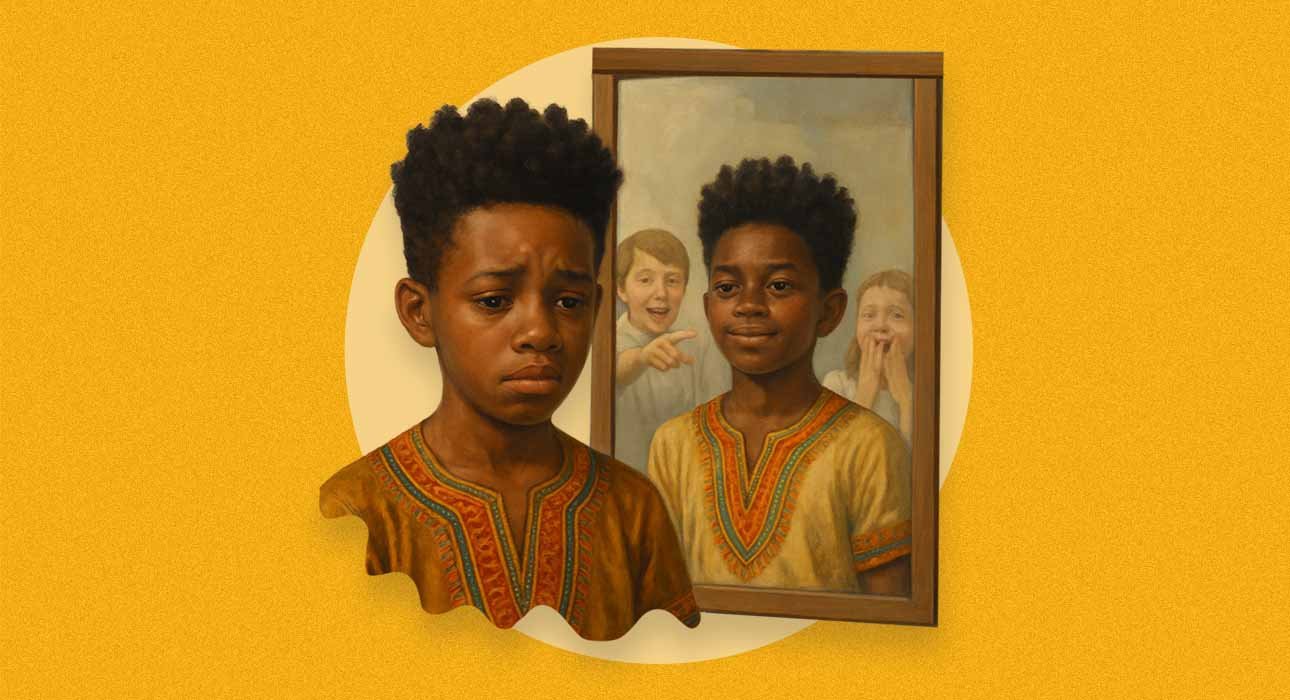In a world that moves at light speed, constant adaptation can take a toll on our mental well-being. The longing to belong isn’t always as loud as the pressure to fit in or to stand out. Being heard, accepted, and seen is everything humans crave. ‘Do We vs Do I?’, Collectivist vs individualist, “What do I really want?”. A question asked from a cultural lens is seen to stir up conflict, whose answer is a deeply psychological one.
Questioning who we are, what we believe in, and stand for is a very normal and important constant in our lives. We live in a society that is always on the brink of information overload, yet demanding opinions, which is sure to feel like a mental rollercoaster. This article explores how the cultural identity conflict impacts mental well-being and what role identity and self-concept play in one’s life.
ALSO READ: Cultural Kaleidoscope: Learn about Cross-Cultural Psychology
What is Cultural Identity and Cultural Identity Conflict?
Cultural Identity is a lens through which you process the world, a filter, if you will. It is not a static concept. Where we grew up, what we eat, our religion, habits, practices, and the choices we make, all of it become a lens for processing. It refers to an individual’s sense of belonging to a culture or group formed through aspects like language, beliefs, values, rules, and norms.
The cultural identity conflict (clash of opinions when two groups or people holding contrasting beliefs interact) can create internal tension, often manifesting as psychological distress, including anxiety, stress, lowered self-confidence, isolation, and alienation, the need to fit in, the fear of missing out, wish to stand out, and more. This is especially hard when factors like race, ethnicity, gender, workplace culture, education, religion, and even class come up in our day-to-day activities, playing a vital role in self-perception, self-concept, identity, mental well-being, overall inclusivity, and satisfaction.

Multiple identities and cultural whiplash
We find ourselves seeking validation for the choices we make and hope to feel supported by those around us or those who think alike.
The “Who Am I?” Question in Identity Formation
The stage of identity vs role confusion in Erik Erikson’s psychosocial theory retraces the question of “Who am I?”. In which one is learning to form his or her identity and self-concept. Being vulnerable to influence can make the process full of bumps when one finds themselves caught in a conflict of cultural identity. Who someone is expected to be at home versus in school, college, or work—and what opinions they’re expected to hold about politics, current events, or relationships—can only add to the confusion.
For example, Leena is called “Leena” at home and dresses a certain way when with family, but likes being called “Lee” in college. She styles herself the way the others in school or college do to fit in, make friends, feel ‘cool’, and feel seen and liked. A code-switch of sorts. This is one example of how environmental culture needs to fit in or stand out can impact mental wellbeing and one’s sense of identity. Keeping up two identities when truly not knowing which to pick to feel included and original can lead to impostor syndrome – a sense of inauthenticity despite outward success, role stress, and even suppression or pickiness in self-expression.
Daily conversations and feeling seen
A tug of war between the culture within us and around us, and how we try to adapt to it, is better explained by the Identity Negotiation Theory by Stella Ting-Toomey. It highlights the interplay between personal identity and how society influences us, and the negotiation between them. Every person has some interaction goals and expectations from others.
Often, while engaging in a conversation with members of the same cultural group, one is likely to feel a part of a larger community and safe. One is likely to feel more confident and express their opinions in a way they know will be liked by the rest, and also feel more open to sharing while being open to new ideas and practices within the group.
Whereas when talking to members of another cultural group or of those that have contrasting values, beliefs, or opinions that are different from our own experiences – one is likely to either hold back or mold their conversation to temporarily fit the others for mere gratification or even respect and negotiate for a reward they are wanting out of the conversation too.
ALSO READ: The Role of Social Identity in Group Dynamics
Impact on Mental Well-being
This can be exhausting to keep up with the increasing mental load, and fear of not being seen leads to either superiority and resentment for the other group, or feeling inferior to oneself. This ongoing negotiation often leads to friction, emotional suppression, and self-doubt. One may get influenced by the other group, expanding his or her value system and again leading to identity conflict and unexpected change.
Voices in our heads as the ‘Society of Minds’
There’s not merely a single voice in our head but a “society of minds”, as Hubert Hermans stated in his Dialogical Self theory. A collection of voices, each contributing to one or more perspectives of beliefs, and opinions shaped by experiences and interactions.
Our family, friends, and the world whether social media or physical experiences expose us to various points of views, various groups, and languages, opinions having their own story, reasoning, facts, and understanding of the same things that result in a state of having built multiple voices in our heads that can often interfere while trying to make a decision or stick by one to know what we want and who we are can cause cognitive dissonance, anxiety, or stress.

Conclusion
It can be hard to find oneself in a pool of different identities and beliefs. Navigating what feels authentic, what’s accepted, and what belongs, while also doubting others for the same, can be an ever-changing process. To feel better in this chaos, we can begin by being kind, respecting others, and staying mindful. Finding a middle ground by connecting with like-minded individuals, engaging in open conversations, and staying curious about new opinions, while understanding their roots, can help broaden our perspective.
ALSO READ: Cultural Kaleidoscope: Learn about Cross-Cultural Psychology
FAQs
1. Why is self-identity and concept important?
It shapes our thought processes and our decisions. It helps build confidence and a stable image of oneself, making us more equipped to have better relations, interactions, and choices.
2. How do our friends, family, and environment impact our cultural identity?
The place we grow up in, the food we eat, the traditions we follow, the way we converse with elders and those our age, the norms and values are unique to each family, and they reflect in our friendships and other relationships as well. The schools, colleges, and workplaces we go to can cause biases and mold our identity indirectly. They are likely to influence our values, beliefs, and the rest.
3. What can help ease the distress around cultural identity conflict?
- Intercultural Effectiveness Training (IET)
- Communication workshops
- CBT and Cross-Cultural Counselling- Seeking help from mental health professionals.
- Practicing Mindfulness and Mindfulness-Based interventions (MBIs)
References
1. Rahim, H. F., Mooren, T. T., Van Den Brink, F., Knipscheer, J. W., & Boelen, P. A. (2021). Cultural Identity Conflict and Psychological Well-Being in Bicultural Young Adults. The Journal of Nervous and Mental Disease, 209(7), 525–532. https://doi.org/10.1097/nmd.0000000000001332
2. APA PsycNet. (n.d.). https://psycnet.apa.org/record/2008-11667-017
3. Cultural Identity & Mental Health | Family Pressures. (n.d.). YoungMinds. https://www.youngminds.org.uk/young-person/coping-with-life/cultural-identity-and-mental-health
4. Jensen, L. A., Arnett, J. J., & McKenzie, J. (2011). Globalization and cultural identity (pp. 285-301). Springer New York. https://link.springer.com/chapter/10.1007/978-1-4419-7988-9_13
5. Schwartz, S. J., Zamboanga, B. L., & Weisskirch, R. S. (2008). Broadening the study of the self: Integrating the study of personal identity and cultural identity. Social and personality psychology compass, 2(2), 635-651. https://compass.onlinelibrary.wiley.com/doi/abs/10.1111/j.1751-9004.2008.00077.x
6. Smolicz, J. (1981). Core values and cultural identity. Ethnic and racial studies, 4(1), 75-90. https://www.tandfonline.com/doi/pdf/10.1080/01419870.1981.9993325













Leave feedback about this